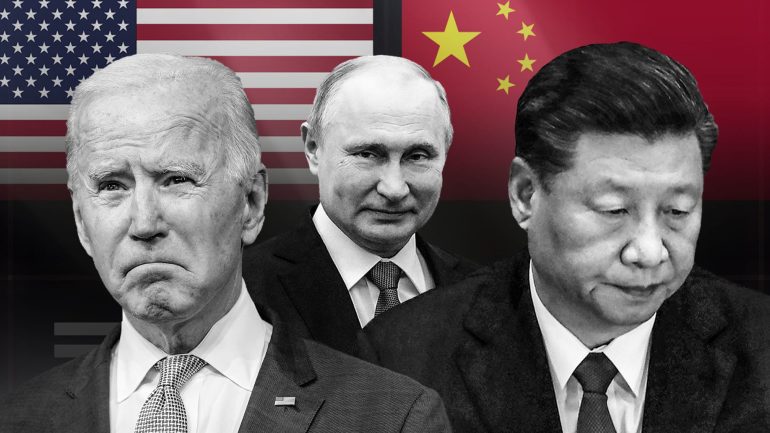- Biden administration considering restrictions on advanced AI models to curb China and Russia’s access.
- Commerce Department exploring regulatory measures targeting proprietary AI models.
- Concerns arise over potential misuse of AI models for cyber attacks and biological weapon development.
- Proposed export controls based on computational power thresholds face challenges in enforcement.
- Expert opinions vary on the most effective regulatory approach.
- Impact of regulations extends to backend software powering consumer applications like ChatGPT.
Main AI News:
In an effort to safeguard US AI technology from China and Russia, the Biden administration is considering imposing restrictions on the most advanced AI Models, the core software behind artificial intelligence systems such as ChatGPT, according to sources.
The Commerce Department is exploring regulatory measures to curb the export of proprietary or closed source AI models, which keep their software and training data confidential, sources familiar with the matter disclosed.
These potential actions would complement existing efforts to prevent the export of high-tech AI chips to China, aiming to impede Beijing’s progress in military technology. However, keeping up with the rapidly evolving industry poses a significant challenge for regulators.
While the Commerce Department refrained from commenting, the Russian Embassy in Washington did not provide an immediate response. The Chinese Embassy criticized the move as “economic coercion and unilateral bullying,” pledging to take necessary measures to protect China’s interests.
Currently, major US AI companies like Microsoft-backed OpenAI, Google DeepMind, and Anthropic have developed powerful closed source AI models, which could be sold globally without government oversight, raising concerns among government and private sector researchers.
There are worries that adversaries could exploit these models for aggressive cyber attacks or even the creation of biological weapons. Microsoft’s report in February highlighted hacking attempts by groups affiliated with Chinese, North Korean, Russian, and Iranian governments to enhance their hacking capabilities using large language models.
To implement export controls on AI models, the US might rely on a computing power threshold outlined in an AI executive order from October. This threshold, based on the computational resources required for model training, could determine which AI models are subject to export restrictions.
However, finalizing such regulations is complex, and the government is grappling with the practicalities of enforcing them effectively. Despite the challenges, the US government aims to address gaps in its strategy to counter China’s AI ambitions.
As the Biden administration confronts competition with China and the risks associated with advanced AI, it acknowledges the significance of regulating AI models. However, turning this into an export-controllable aspect remains uncertain.
Intelligence agencies, think tanks, and academics emphasize the dangers posed by foreign actors gaining access to advanced AI capabilities. Concerns range from the development of biological weapons to the facilitation of sophisticated cyber attacks.
While the US has taken steps to restrict the export of AI-related technologies, including AI chips, regulations specifically targeting AI models are still in progress. Experts suggest that a computing power threshold could serve as a temporary measure until more comprehensive methods are developed.
However, opinions diverge on the most effective approach to regulation. Some argue for a focus on national security risks rather than technological thresholds, suggesting a control based on the model’s capabilities and intended use.
The effectiveness of export controls will depend on various factors, including the type of data, potential uses, and the open-source nature of many AI models. Defining the right criteria for regulation poses a significant challenge, particularly as China advances in AI development.
Ultimately, the proposed export control measures would impact the availability of backend software powering consumer applications like ChatGPT, underscoring the complexities of regulating AI technology in a globalized market.
Conclusion:
The US’s efforts to restrict access to advanced AI software, particularly from China and Russia, reflect growing concerns about national security risks. While these measures aim to safeguard sensitive technology, they also introduce complexities for global markets. Businesses operating in the AI sector may face tighter regulations and increased scrutiny, impacting their ability to innovate and compete internationally. Additionally, the proposed export controls could disrupt supply chains and collaborations, requiring companies to navigate evolving regulatory landscapes effectively.

